The all-new 2021 Stumpjumper Evo is available in four carbon-framed models and six different size options with plenty of neat features amassing an impressively refined package.
- Specialized’s 2021 Stumpjumper Evo promises tantalising trail-domination
- Specialized’s new Chisel is a fast, light and affordable XC race machine
I took to my local trails in the Tweed Valley to find out how the all-new bike performed and whether Spesh’s “ultimate trail bike” claims hold true or if there are better bikes out there.
2021 Specialized Stumpjumper Evo S-Works frame and suspension details
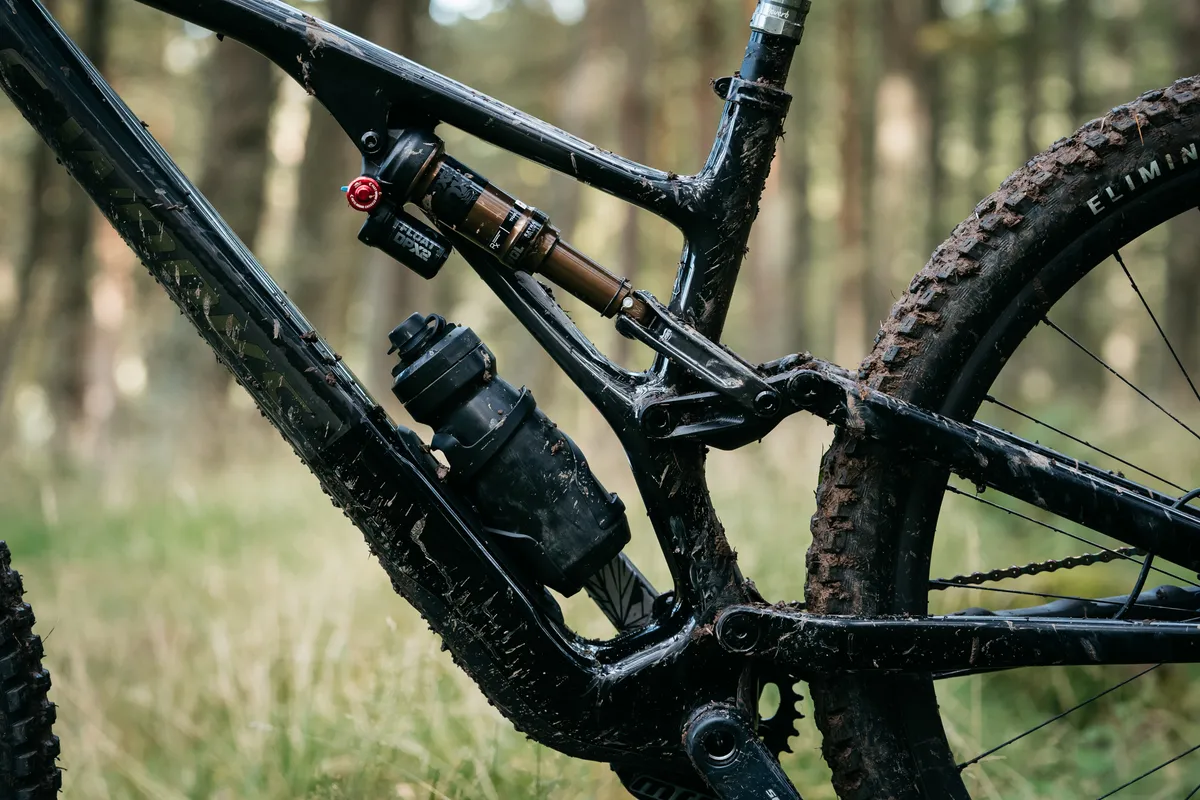
Built from Specialized’s FACT 11M carbon fibre, Specialized says it's tuned the frame’s construction to hit the sweet-spot between compliance and comfort and rigidity, thanks to different thicknesses of material and the Sidearm strut that joins the top and seat tubes in parallel with the rear shock.
Each size of bike has been specially created to have the same ride qualities using average rider weight data, too.
The SWAT on-board storage compartment’s capacity has been increased by 15 per cent over the outgoing model and the bike’s supplied with a SWAT 625ml bladder and separate storage bag. There’s also a steerer tube mounted SWAT Allen key set.
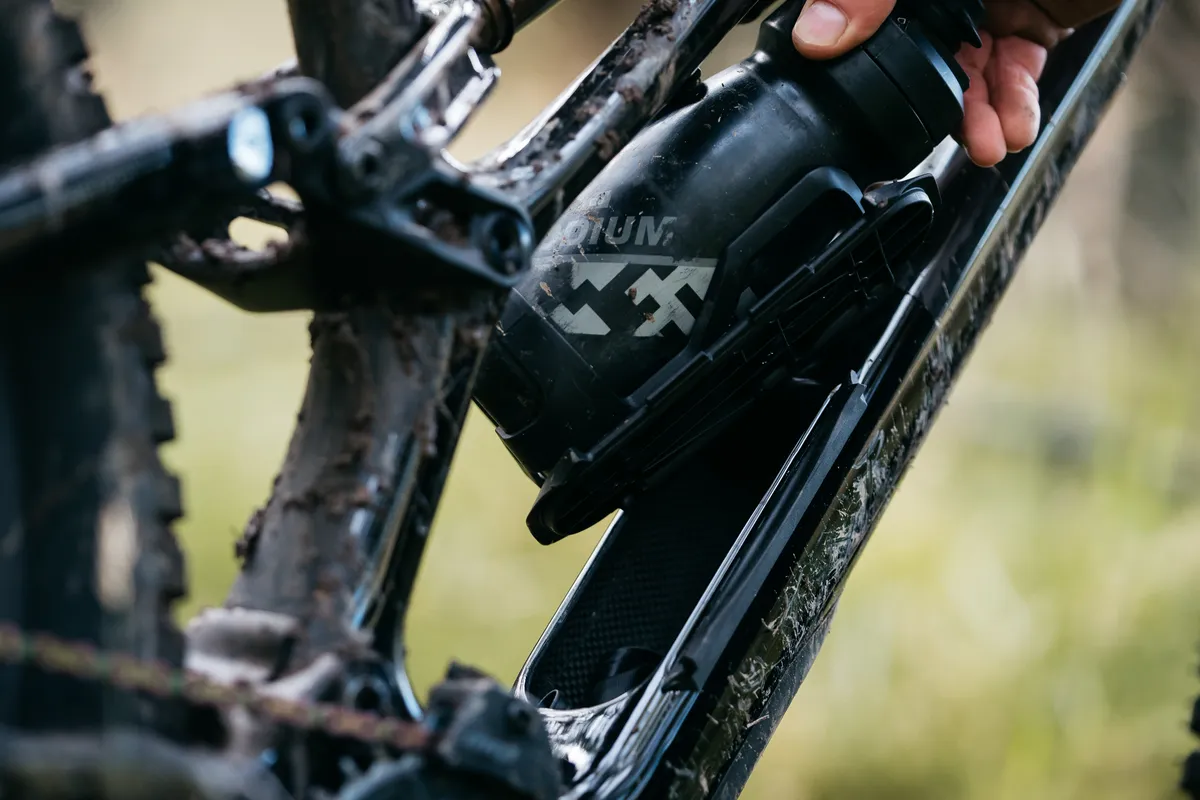
There’s 150mm of rear wheel travel with a 19.35 per cent linear rate of progression. This equates, according to Specialized, to supple off-the-top travel, mid-stroke support and great bottom-out resistance.
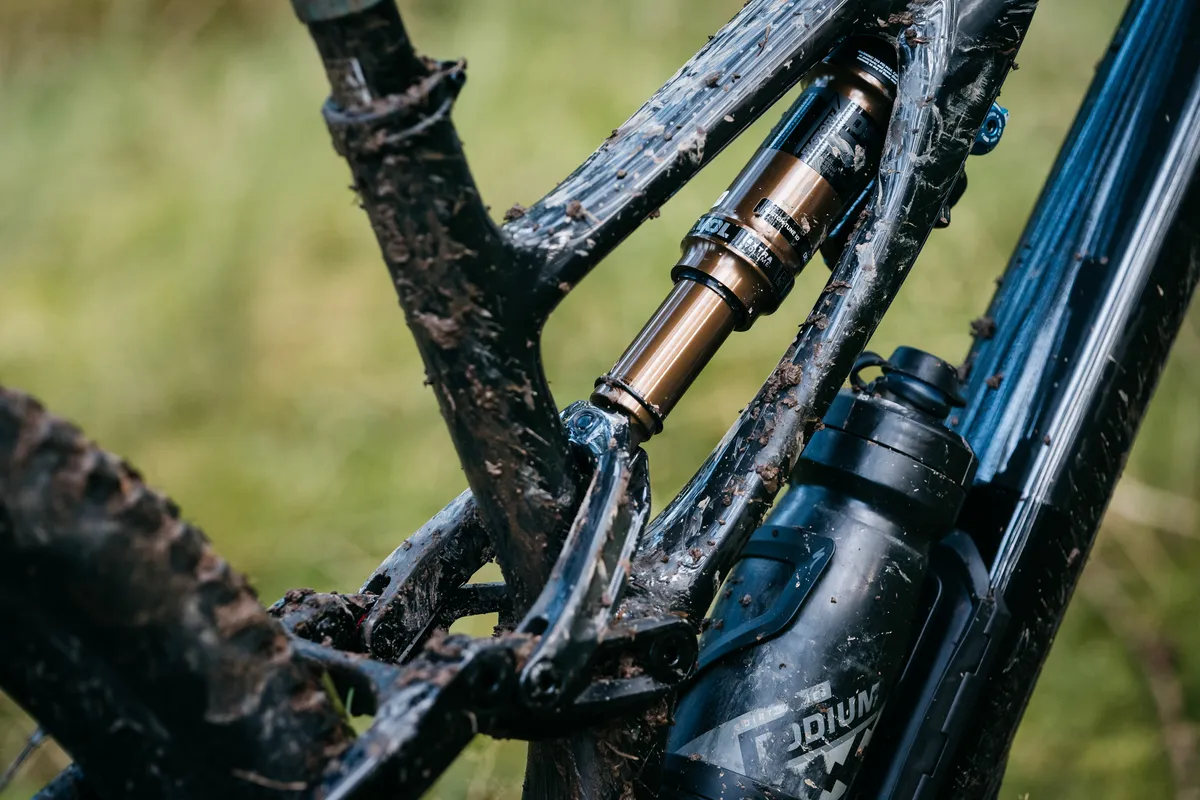
Specialized has also tuned the rear wheel axle path to have a portion of rearward movement, which it claims further enhances the bike’s ability to munch up bumps and hold speed.
2021 Specialized Stumpjumper Evo S-Works geometry
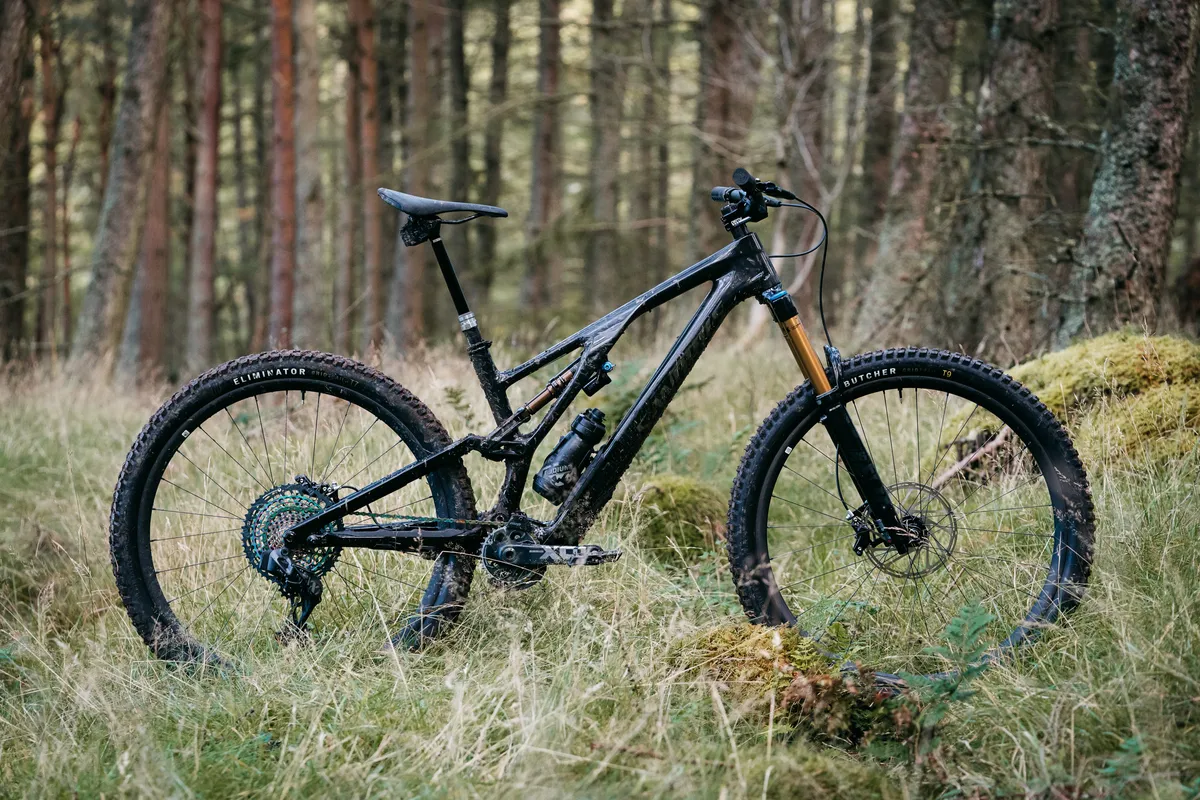
The new Stumpjumper Evo is offered in six sizes and I tested the S4 model, which is equivalent to a size large. In its factory setting, stand out figures include a 64.5-degree head-tube angle and 76.9-degree seat-tube angle.
| Size | S1 | S2 | S3 | S4 | S5 | S6 |
|---|---|---|---|---|---|---|
| Reach (mm) | 408 | 428 | 448 | 475 | 498 | 528 |
| Head tube angle (degrees) | 64.5 | 64.5 | 64.5 | 64.5 | 64.5 | 64.5 |
| Bottom bracket height (mm) | 335 | 340 | 340 | 340 | 340 | 340 |
| Front centre (mm) | 732 | 756 | 780 | 809 | 838 | 873 |
| Chainstay length (mm) | 438 | 438 | 438 | 438 | 448 | 448 |
| Wheelbase (mm) | 1167 | 1191 | 1216 | 1247 | 1285 | 1319 |
| Top tube length (mm) | 538 | 564 | 590 | 623 | 647 | 679 |
| Standover height (mm) | 733 | 764 | 763 | 762 | 767 | 770 |
| Seat tube length (mm) | 385 | 385 | 405 | 425 | 445 | 465 |
| Seat tube angle (degrees) | 78 | 77.6 | 77.2 | 76.9 | 77 | 77 |
It has a 1,247mm wheelbase, 438mm chainstays, reach figure of 475mm and the bottom bracket height sits at 340mm.
I intend to adjust the bike’s geometry to its slackest and lowest positions, which will give a 63-degree head angle, 76.6-degree seat-tube angle and 1,261mm wheelbase. The chainstay length will increase to 443mm but the reach will shorten to 468mm – and this is how I tested the bike and what my ride impressions below are based on.
2021 Specialized Stumpjumper Evo S-Works specifications
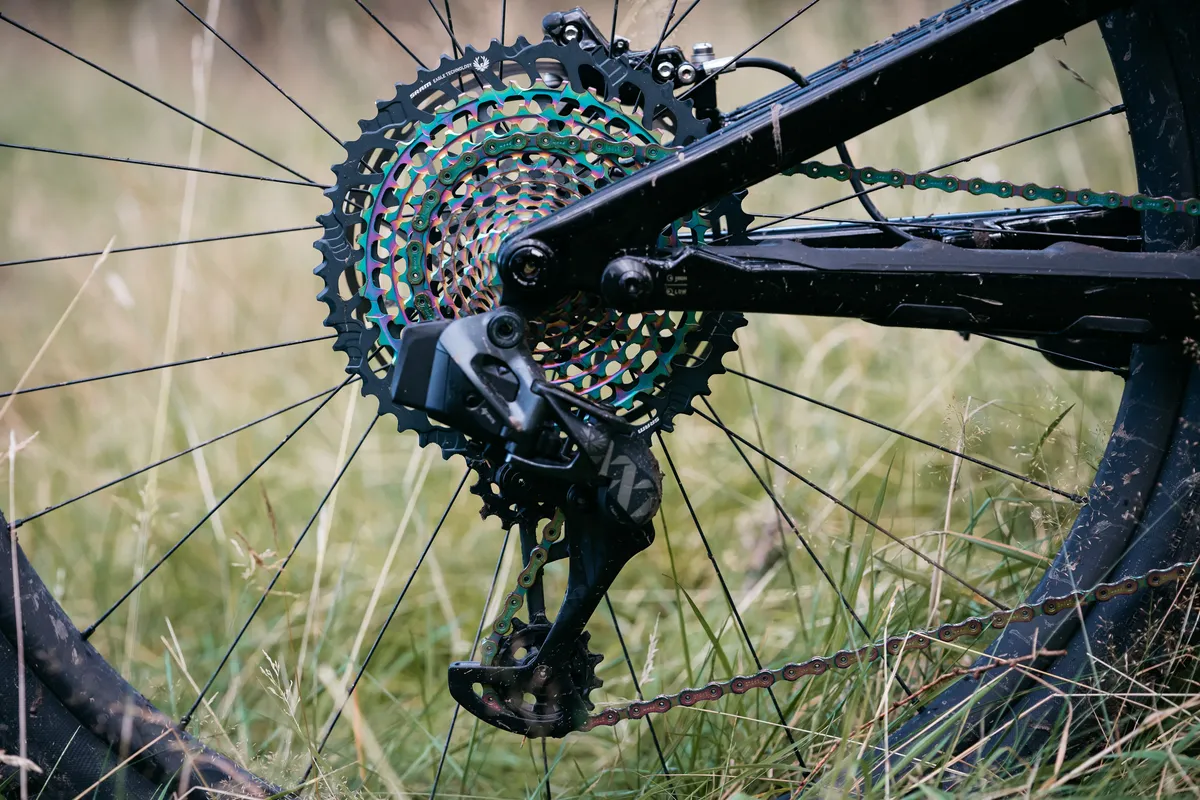
The S-Works version of the Stumpy Evo is dripping in top-spec kit, but that’s not surprising given the £9,250 price tag.
There’s a Fox Float 36 Factory GRIP2 fork with 160mm of travel and short 44mm offset, and a Fox Float DPX2 Factory rear shock.
It’s fitted with a full SRAM XX1 Eagle AXS groupset and RockShox Reverb AXS seatpost with 170mm of travel.
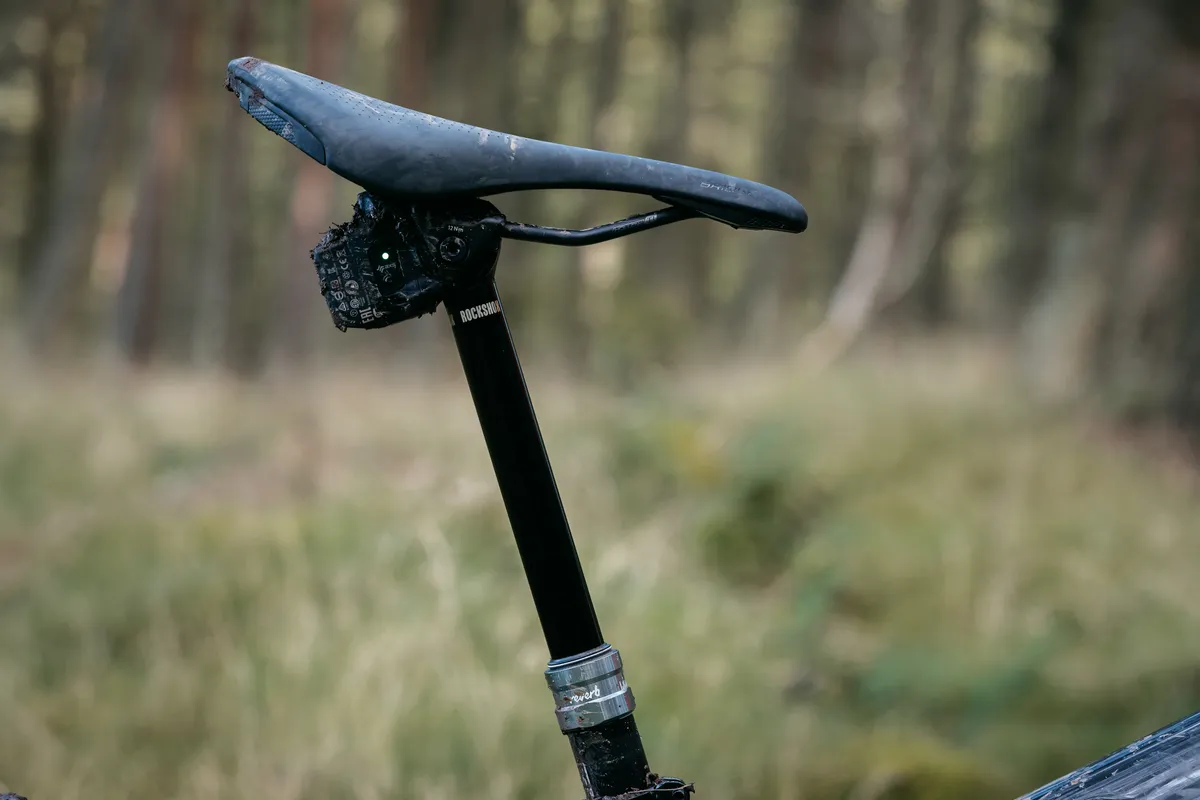
Stopping is taken care of by SRAM’s Code RSC four-piston brakes with 200mm rotors, while Specialized house-brand Roval supplies the wheels and hubs. Those carbon rims are wrapped in Spesh’s new Butcher T9 and Eliminator T7 tyres.
2021 Specialized Stumpjumper Evo S-Works ride impressions
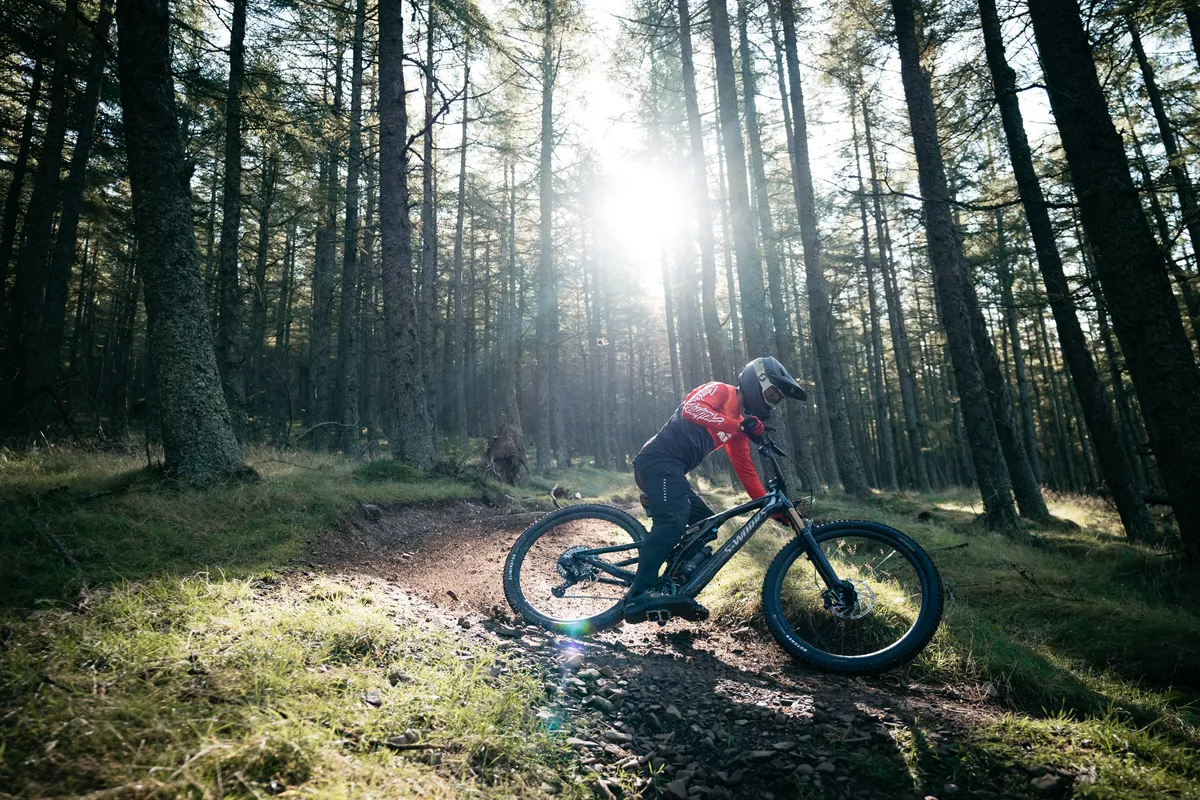
The 2021 Stumpjumper Evo was launched on my local trail in Scotland’s Tweed Valley, and while I only managed to get a day’s uplifting with Adrenaline Uplift at Innerleithen, I did ride a host of terrain types – on tracks that I know – to get some good impressions of the bike.
2021 Specialized Stumpjumper Evo S-Works climbing performance
Unsurprisingly, the Stumpjumper Evo was a spritely climber thanks in part to its 13.92kg headline weight figure (S4, without pedals), helping to offset its 150mm travel rear-end and downhill credentials.
Although the seat-tube angle was fairly steep – sitting at a claimed 76.6 degrees – I still had to angle the seat's nose down and push it forwards in the rails to get comfortable.
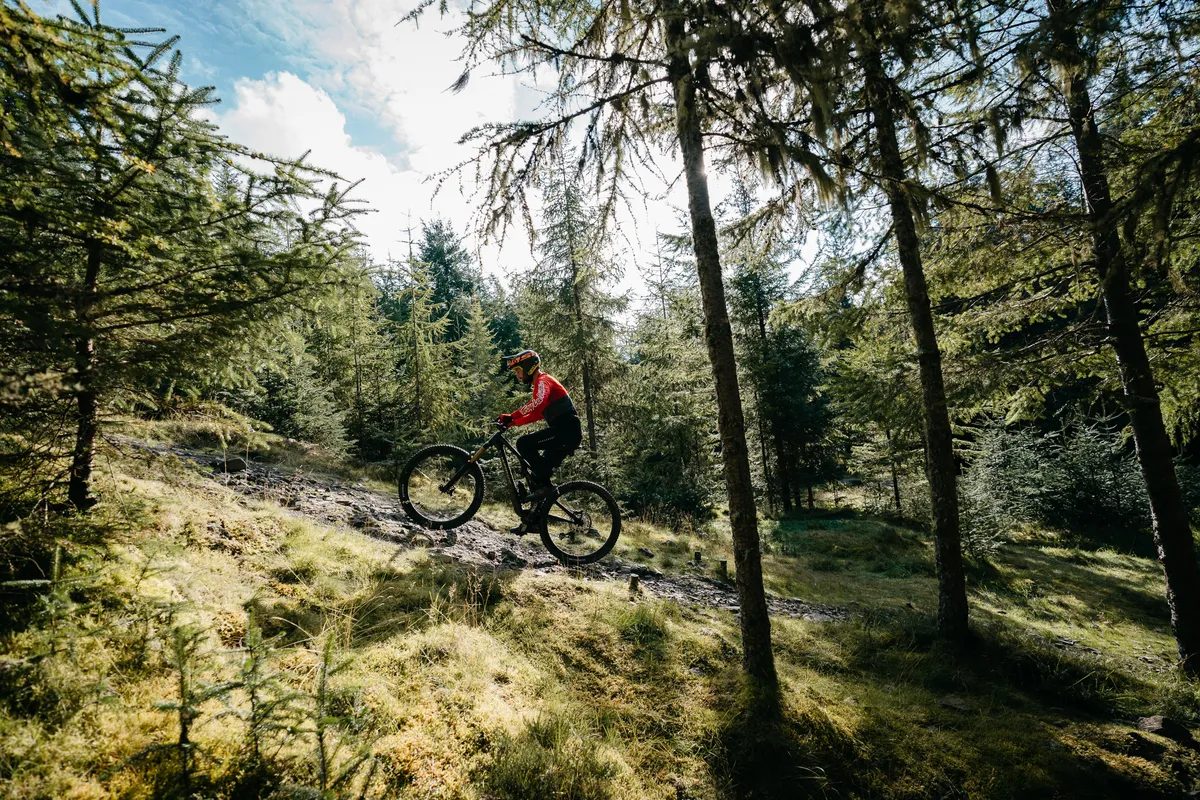
Once it was positioned, climbing was a relatively fuss-free and stable affair, with the bike not needing constant micro-adjustments to keep it on track and hold lines.
My hips felt more centrally positioned than a host of other bikes I’ve recently tested (such as Pace’s RC295), which helped maintain better levels of seating and climbing comfort for longer. I didn’t feel the bike was too slack, wandering around on steeper inclines, though.
There was barely any pedal bob. Impressively, Specialized has managed to tune the rear suspension to not sap energy from rider inputs while maintaining great levels of comfort and traction.
True to Specialized’s claims, the Stumpjumper Evo is a true trail bike and I’d have no qualms taking it out on all-day epics with plenty of climbing – whether that’s technical or on fireroads – and be just as confident at an uplift day.
2021 Specialized Stumpjumper Evo S-Works descending performance
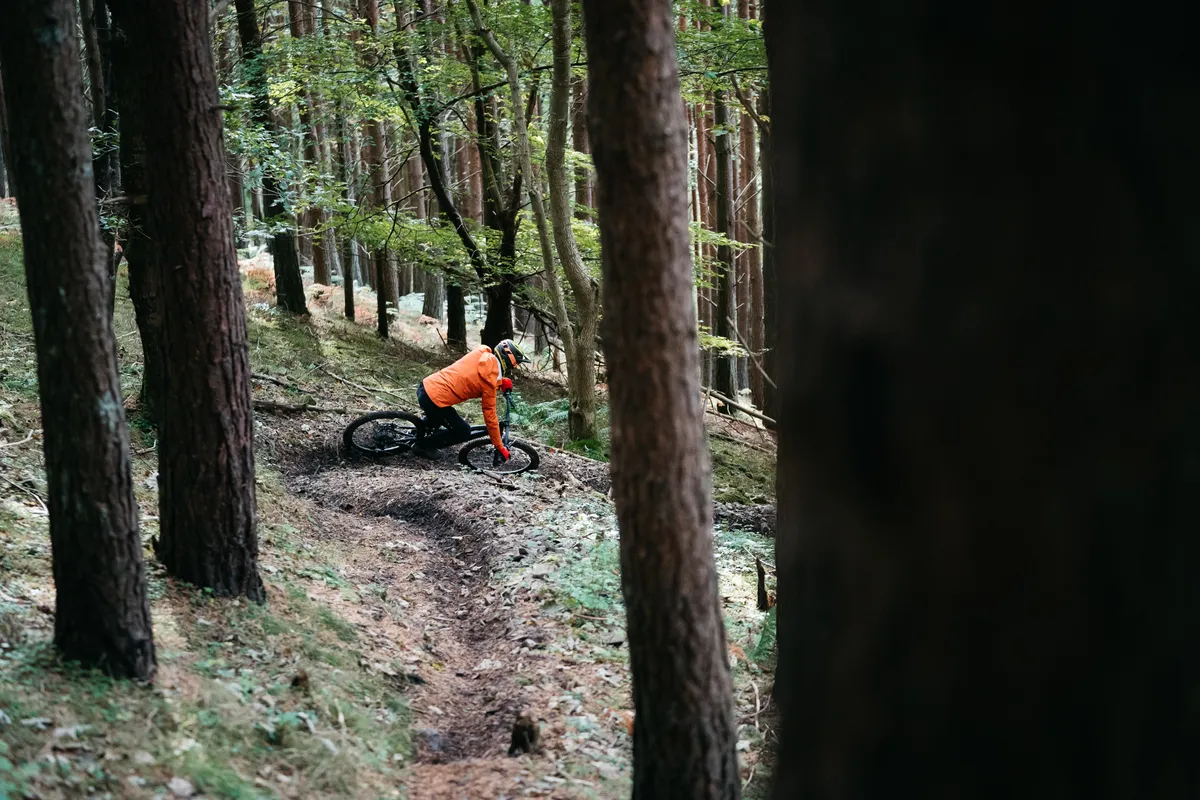
The descents are where the Stumpjumper Evo shows its true intentions.
The rear end’s suspension felt impressive over small bumps, smoothing out chattery terrain well without getting overwhelmed or choked by successive hits.
This small bump performance was down to a combination of the fairly progressive rear end starting out soft, the slightly rearward axle path at the beginning of the bike’s travel and impressive DPX2 rear shock.
There are limits to the progressivity of the bike – it’s roughly 19.35 per cent progressive – and after initially setting up the rear end with 175psi, I had to increase spring pressure to 195psi and add five clicks of low-speed compression adjustment to help provide a little extra support, but only once I’d got used to how it rides and was pushing harder.
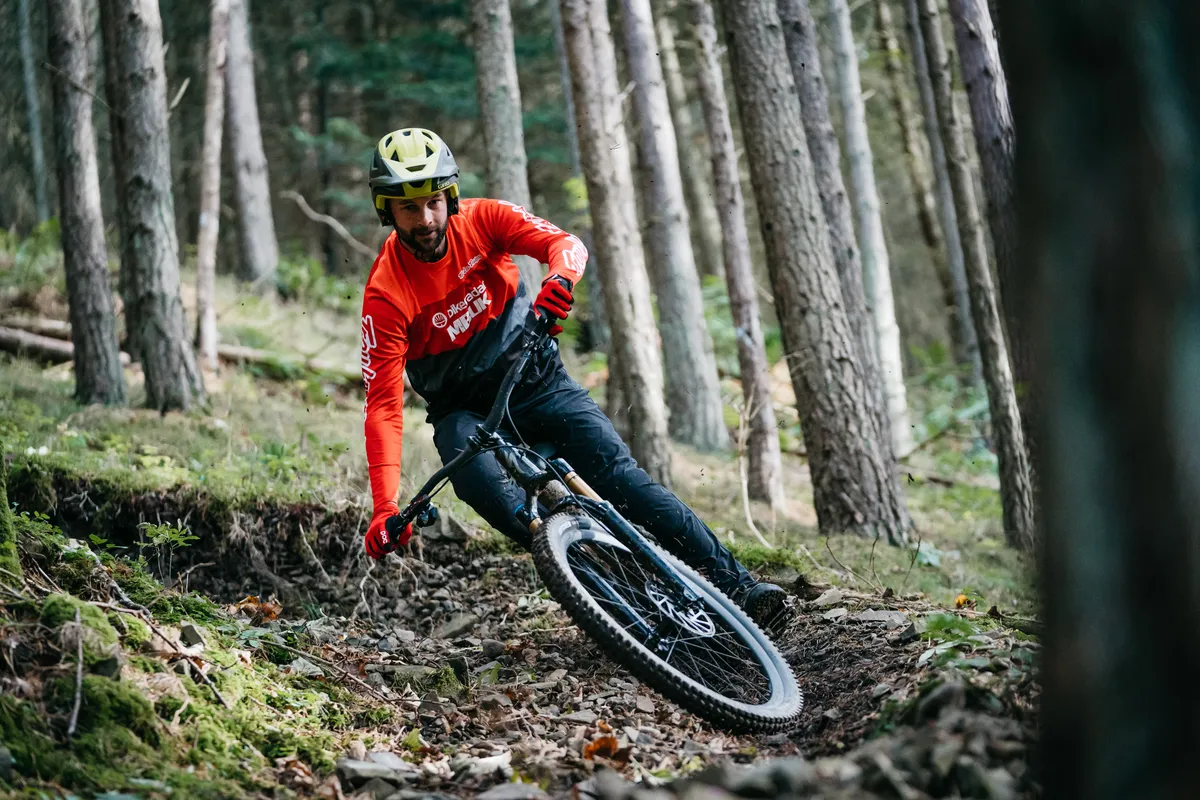
When it was set up a bit firmer, I found that it was possible to pump, push and work the bike through the terrain, especially rough sections, with confidence and commitment. It proved to be a predictable partner to take down gnarly tracks.
And even once I’d increased shock pressure, small bump compliance didn’t go out of the window – the rear end still provided plenty of traction and comfort.
The rear shock’s rebound tune felt pretty heavy and to get it feeling as I wanted, I turned off all of the externally adjustable rebound damping.
The Fox 36 Factory fork with GRIP2 damper was well-matched with the shock, too, and I felt the front and rear ends of the bike’s suspension had impressive balance as they worked together to iron out rough terrain.
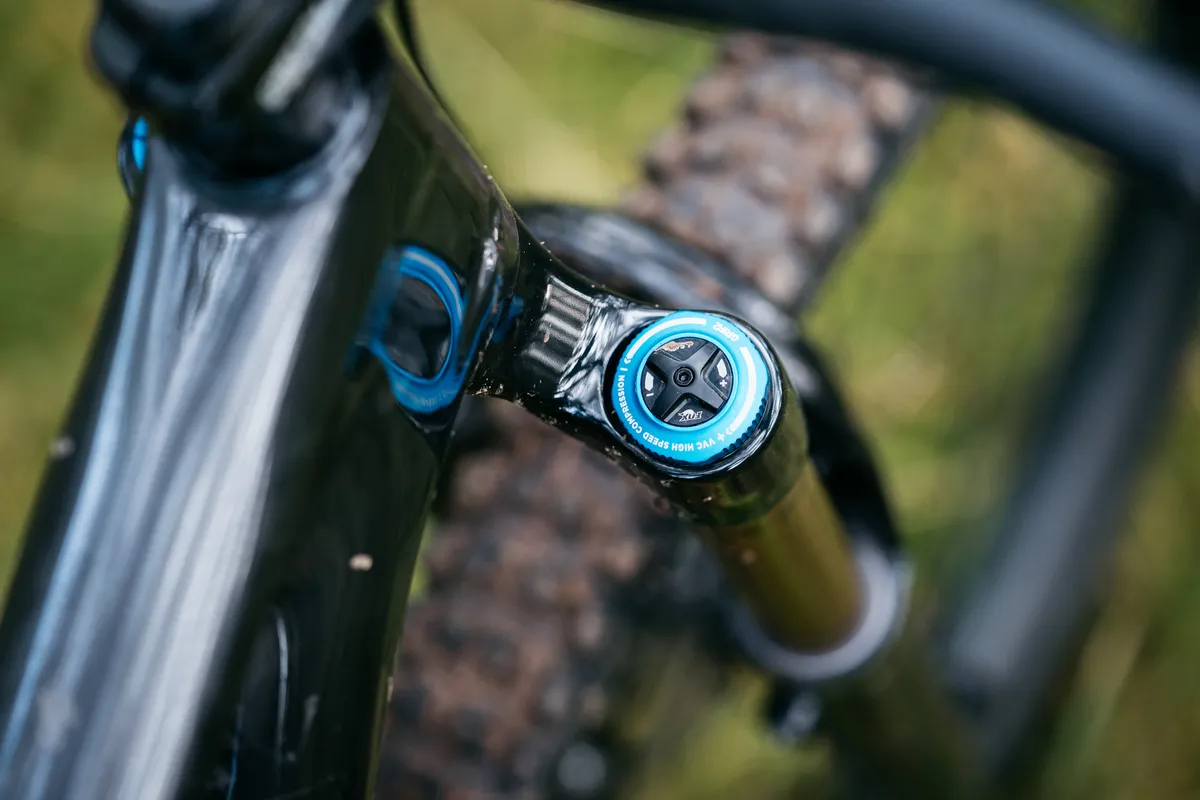
Fox’s GRIP2 forks were easy to adjust and the changes made to compression and rebound damping were easy to feel on the trail.
Couple the bike’s competent suspension with descent-friendly geometry and the Stumpy Evo felt like it was as close to an enduro bike as a trail bike can get.
The stock geometry settings – where the bottom bracket height is set to ‘high’ and the head angle in the middle position – felt okay on flatter terrain, but once the trails got steeper, gnarlier or faster, I wanted to lower the bottom bracket.
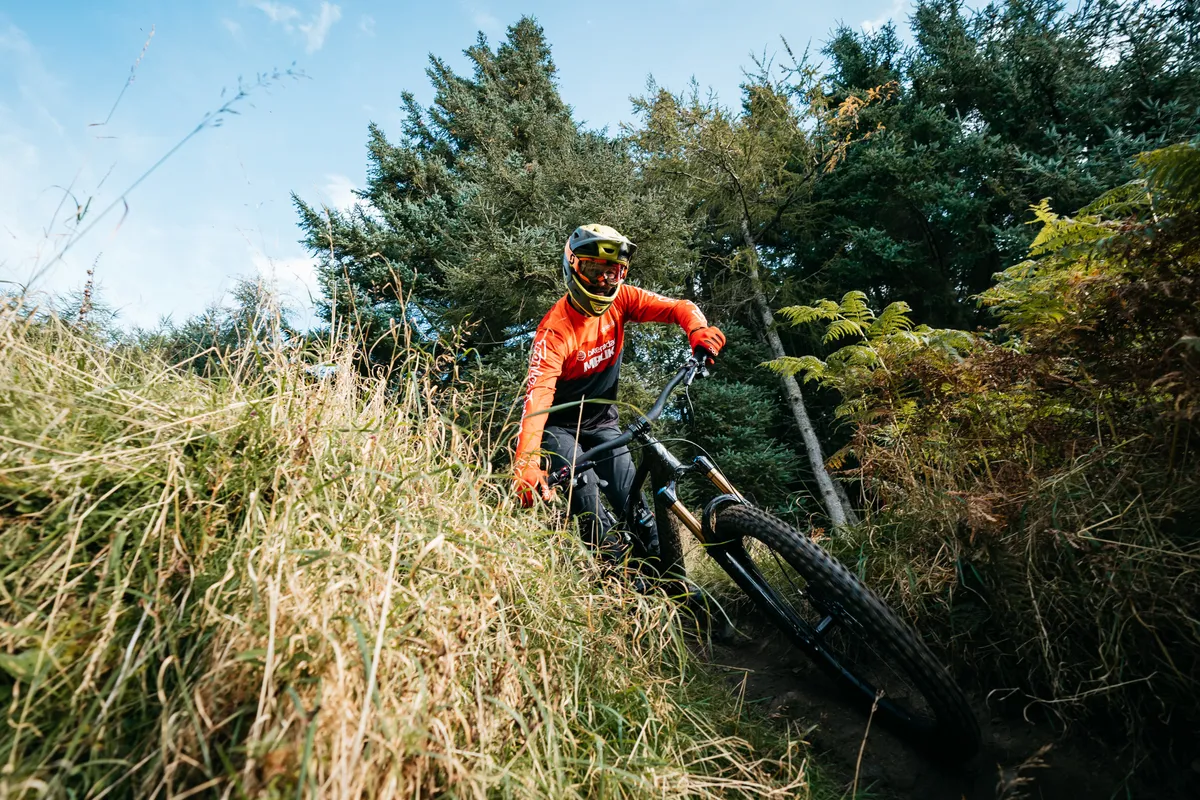
So I adjusted the geometry and set the head angle to 64 degrees, bottom bracket height to 333mm and the wheelbase to 1,251mm and, importantly, increased chainstay length to 443mm.
Once in this setting, steeper trails became much easier to ride with control and confidence thanks in part to a better front-to-rear balance created by the longer chainstays and a slacker head angle and lower BB.
Knowing the head angle could be further reduced to 63 degrees meant that pushing it harder was possible too.
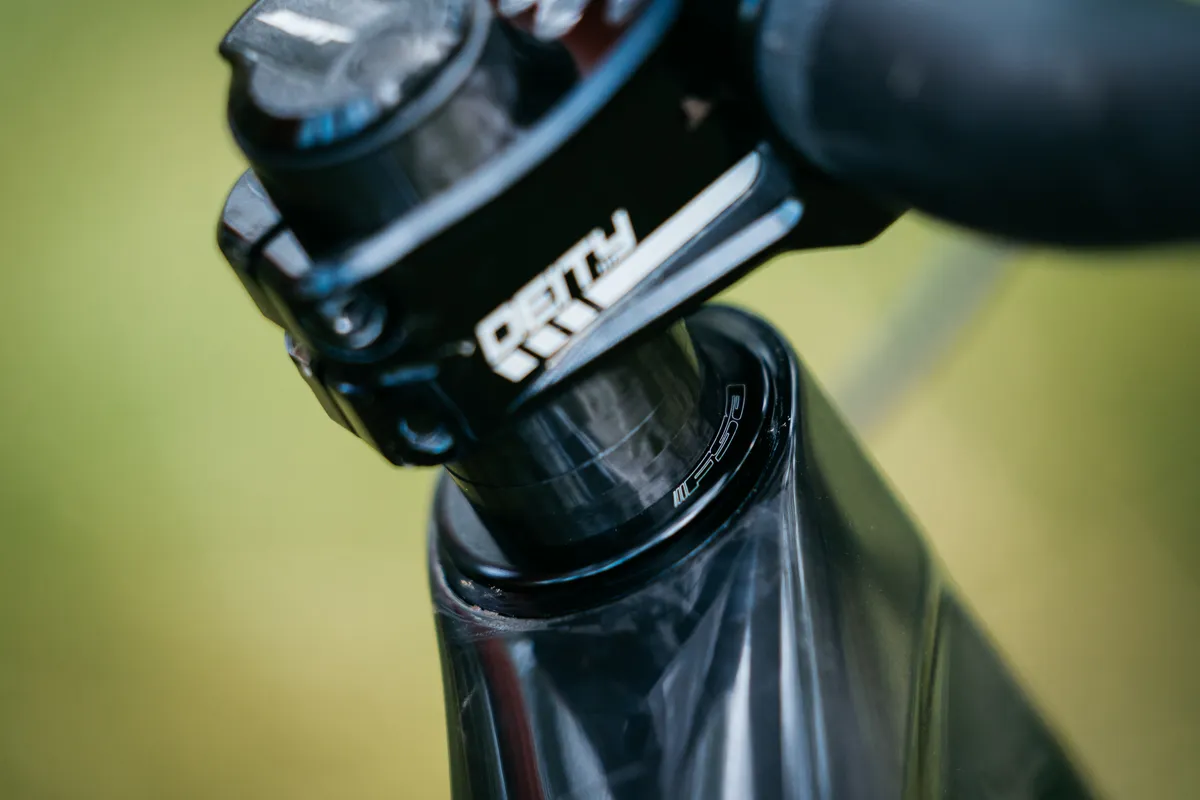
The geometry balance felt good and the relationship between hands and feet was spot on. The initial moments on the bike revealed a very neutral ride and it didn’t require any adaptation or unusual weight shifts to master the ride.
The monumentally expensive S-Works build kit also impressed with its performance. However, because Specialized has done such a good job with shortening seat tubes and lowering overall height, I felt the 170mm travel AXS Reverb didn’t have enough travel to extend to the correct climbing position while dropping enough to get sufficiently out of the way for the descents.
Not getting the post low enough for the descents detracted from Specialized’s commendable ‘style-specific’ sizing approach.
This problem could be rectified with lower stack height posts with longer drops, such as OneUp’s V2 Dropper specced on the LTD mullet bike.
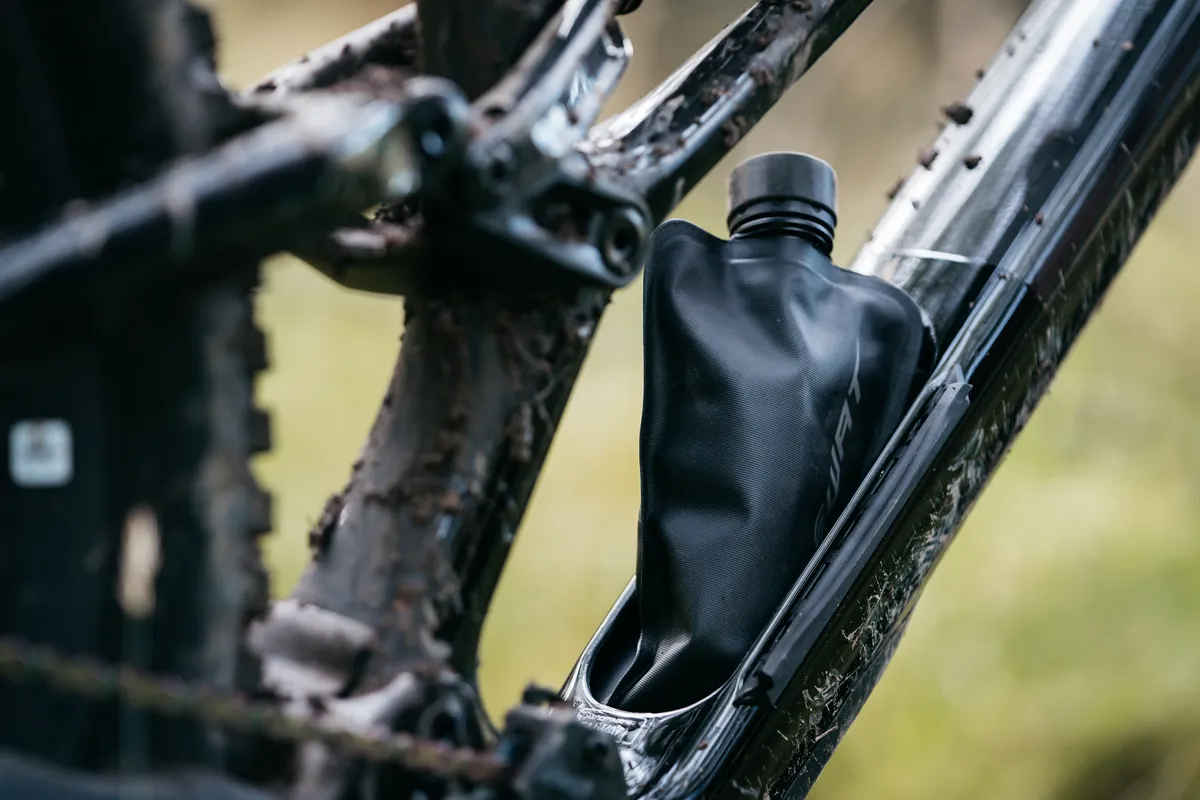
The SWAT pocket’s internal water bottle is a neat touch and it was great to be able to carry so much liquid, tools or clothing on the bike.
Equally, the SWAT steerer tube tool is cool, but when pushing the bike uphill, I rotated the top cap cover and released the sprung-loaded tool from its storage position.
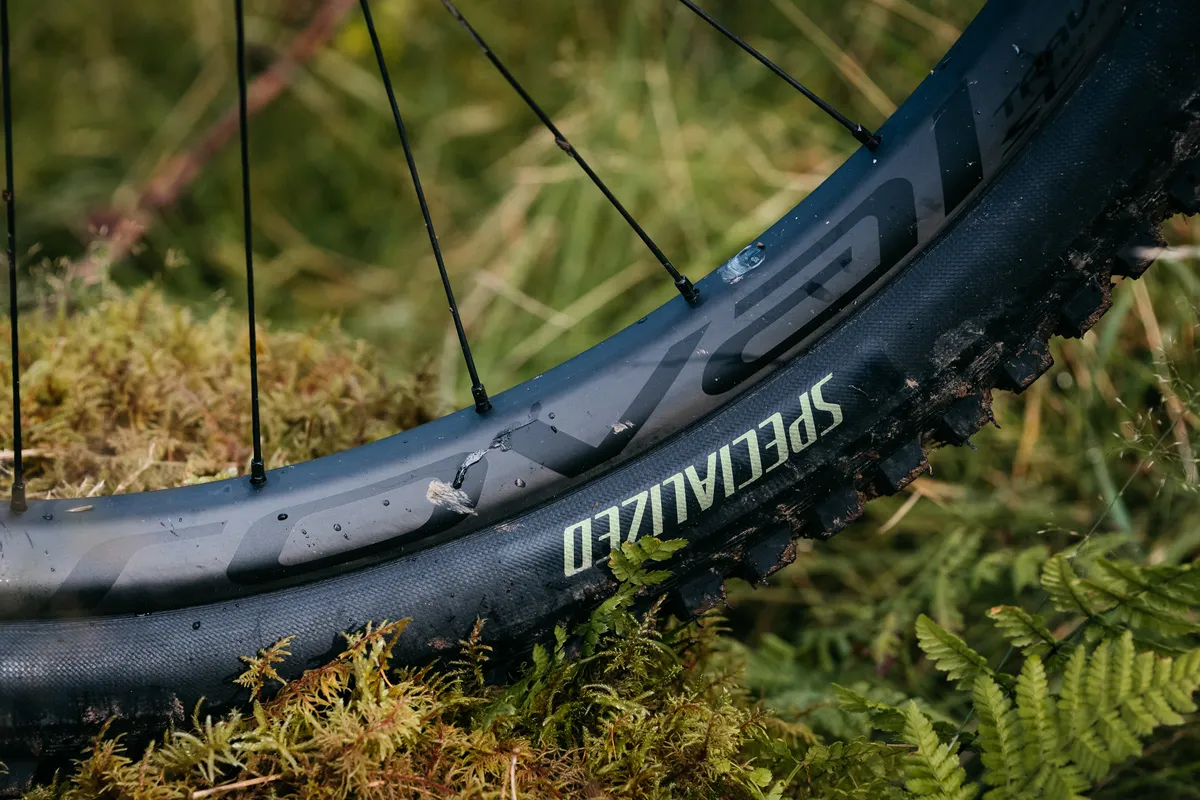
The overall build combined with the frame’s construction also felt good and I was able to stick lines across rough off-cambers while not being able to feel any harshness through my hands and feet.
This smooth-riding feel helped complement the bike’s suspension and geometry, improving composure and speed further.
The inbuilt chainstay protector worked well and chainslap noise was minimal. Overall quietness was helped by the lack of cables thanks to AXS shifting.
2021 Specialized Stumpjumper Evo S-Works bottom line
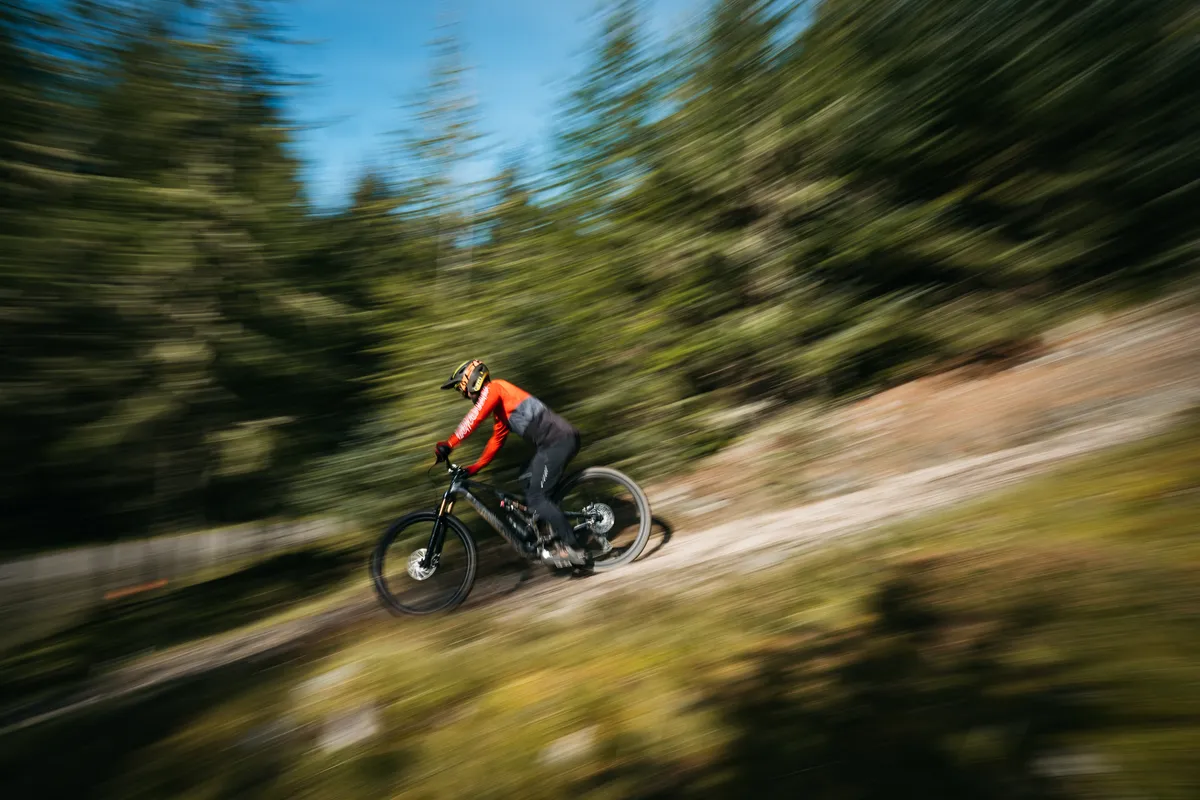
2021’s Stumpjumper Evo certainly feels like a model in its own right rather than the experimental bike it used to, thanks to a host of size and spec options and a refined frame with plenty of attention to detail.
I’d personally like to see longer travel droppers across the range and the ability to spec a Fox 38 or RockShox Zeb to the 29in-wheeled model to bridge the gap between the Stumpy Evo and Enduro. But neither of those things are dealbreakers because the standard spec is seriously sorted.
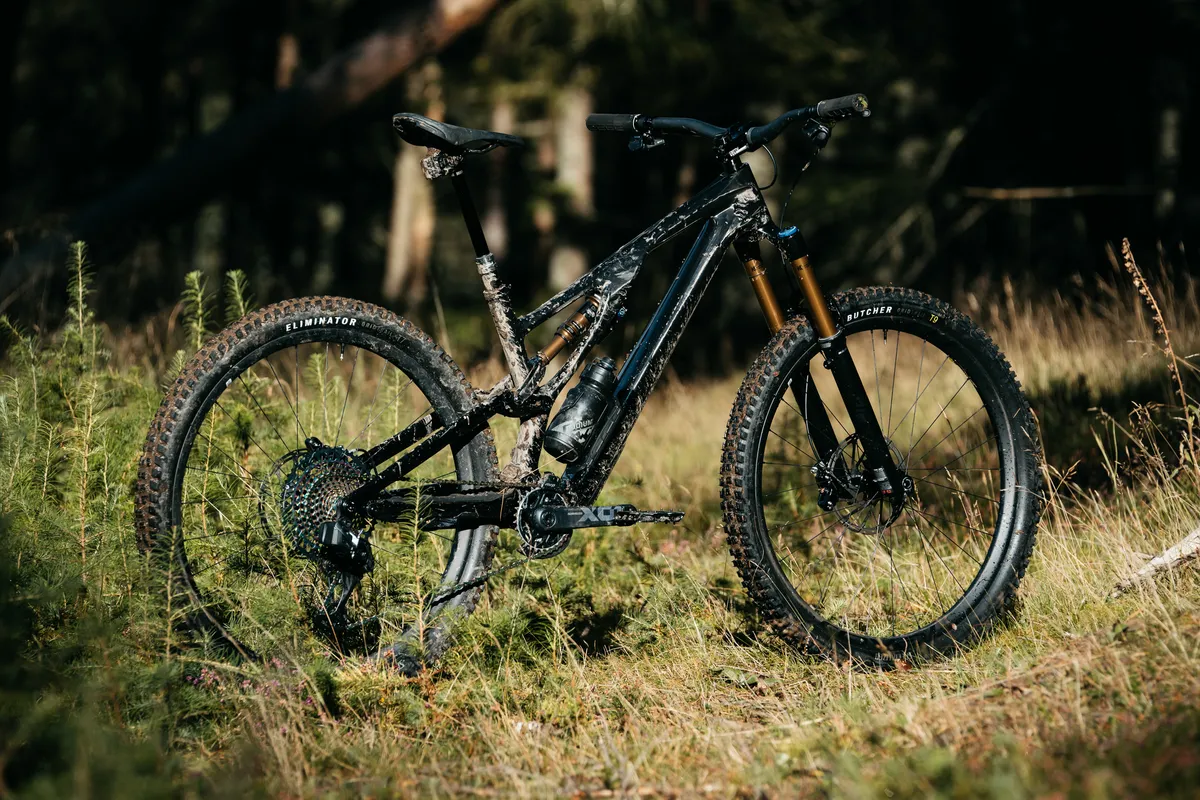
Overall, though, it’s able to tackle pretty much any terrain that could be thrown its way with real conviction and certainly achieves Specialized’s goal of being the next step up from the standard Stumpjumper.
I suspect we’re going to see plenty of 2021 Stumpjumper Evos out on the trails soon.
Product
| Brand | specialized |
| Price | 9250.00 GBP |
| br_whatWeTested | Specialized Stumpjumper Evo S-Works carbon |
| Weight | 13.9200, KILOGRAM (S4) - S4, without pedals |
Features
| Fork | Fox Float 36 Factory GRIP2, 44mm offset |
| br_stem | Deity Copperhead |
| br_chain | SRAM XX1 Eagle |
| br_frame | Specialized Stumpjumper Evo carbon |
| Tyres | Specialized Butcher GRID Trail, GRIPTON T9 2.3x29in (f), Specialized Eliminator GRID Trail, GRIPTON T7 2.3x29in (r) |
| br_brakes | SRAM Code RSC, 200mm rotors |
| br_cranks | SRAM X01 Eagle, 170mm, 30t chainring |
| br_saddle | Specialized Bridge |
| br_wheels | Roval Traverse SL 29 on Roval Traverse SL hubs |
| br_headset | Adjustable |
| br_shifter | SRAM XX1 Eagle AXS |
| br_cassette | SRAM XX1 Eagle |
| br_seatpost | RockShox Reverb AXS 170mm travel |
| br_gripsTape | Deity Knuckleduster |
| br_handlebar | Roval Traverse SL Carbon |
| br_rearShock | Fox Float DPX2 Factory EVOL |
| br_bottomBracket | SRAM DUB |
| br_availableSizes | S1, S2, S3, S4, S5, S6 |
| br_rearDerailleur | SRAM XX1 Eagle AXS |
| Features | Specialized SWAT Door storage system, head tube angle adjustment, Horst-link adjustment, threaded bottom bracket |
